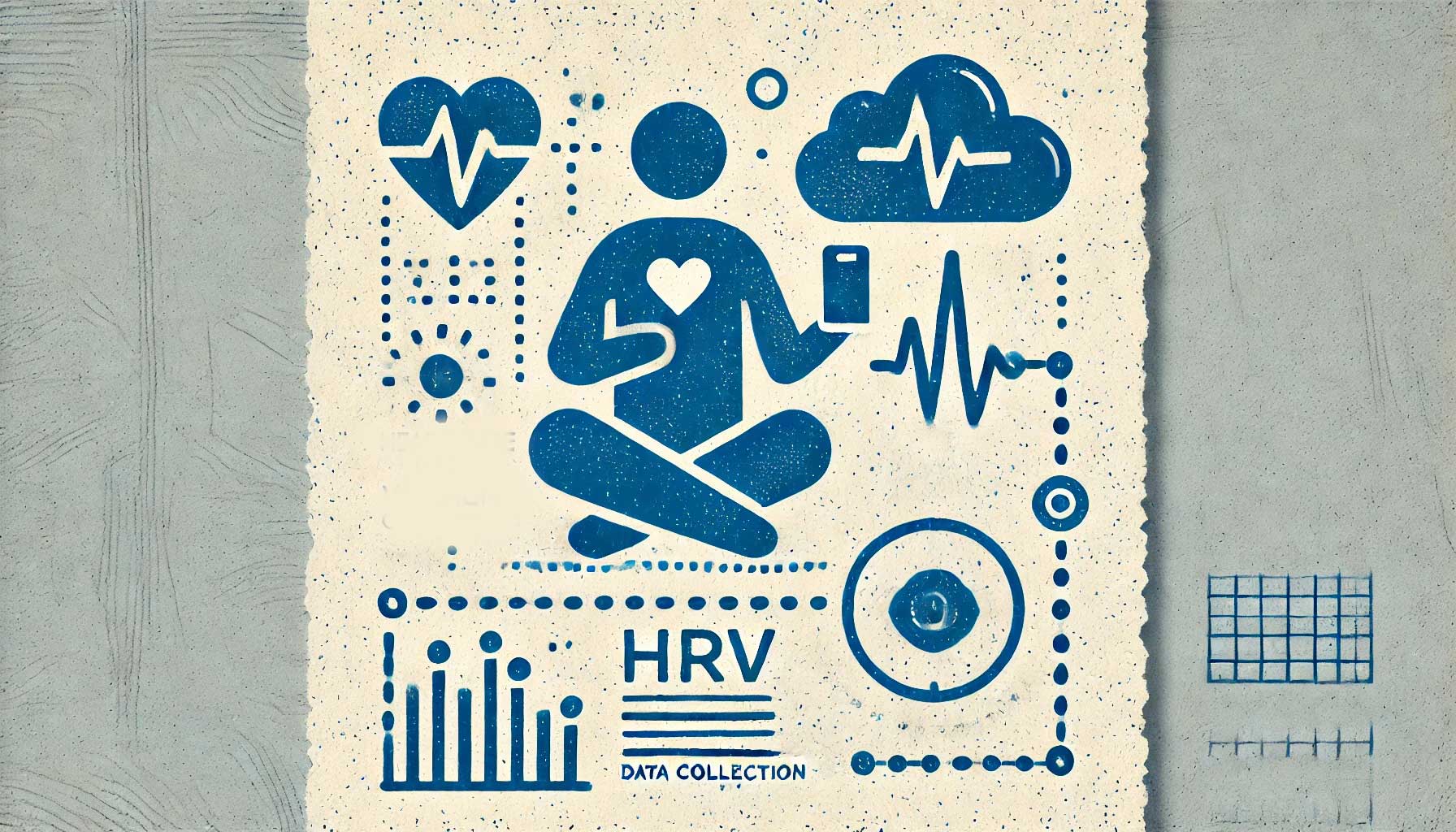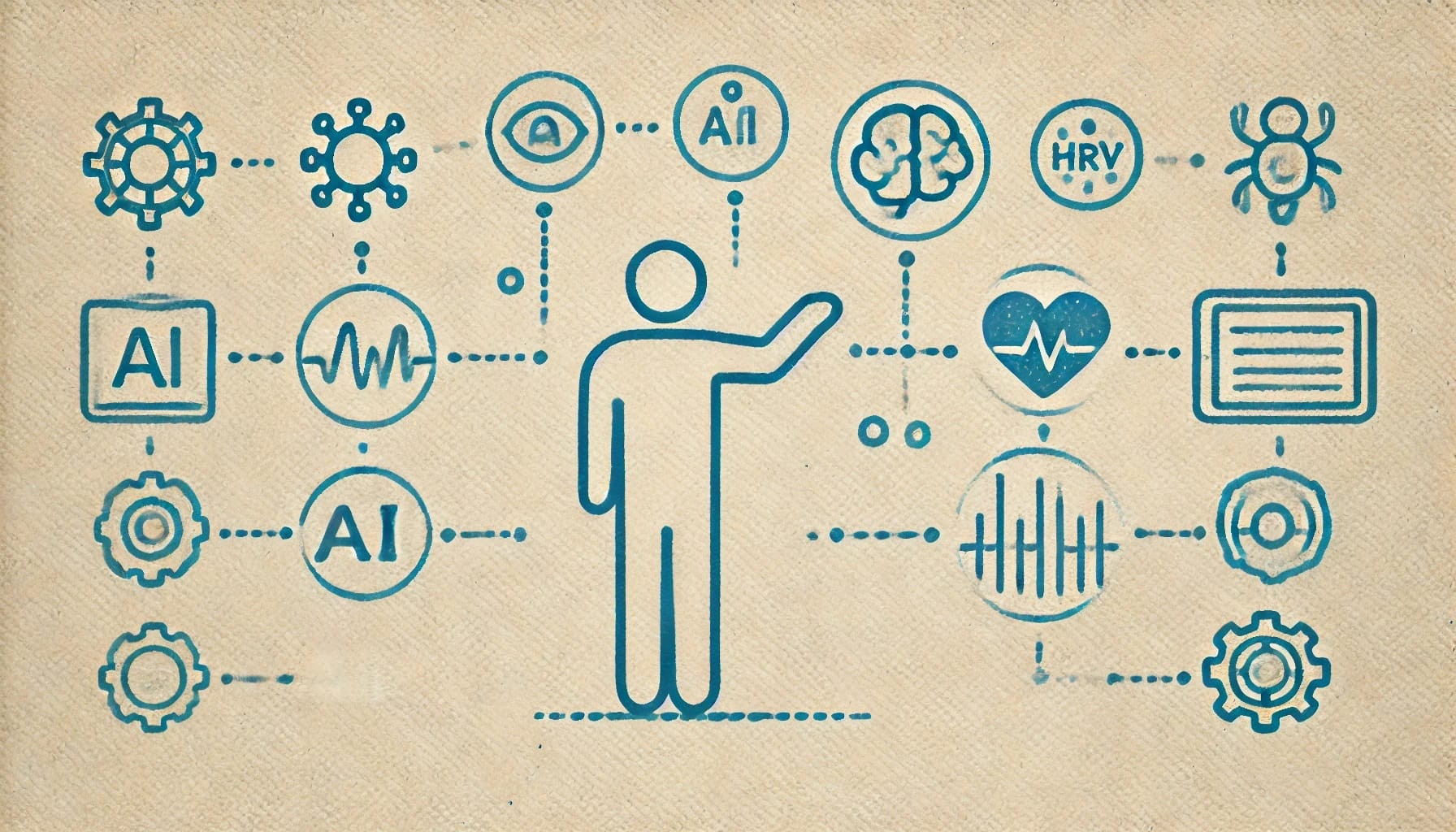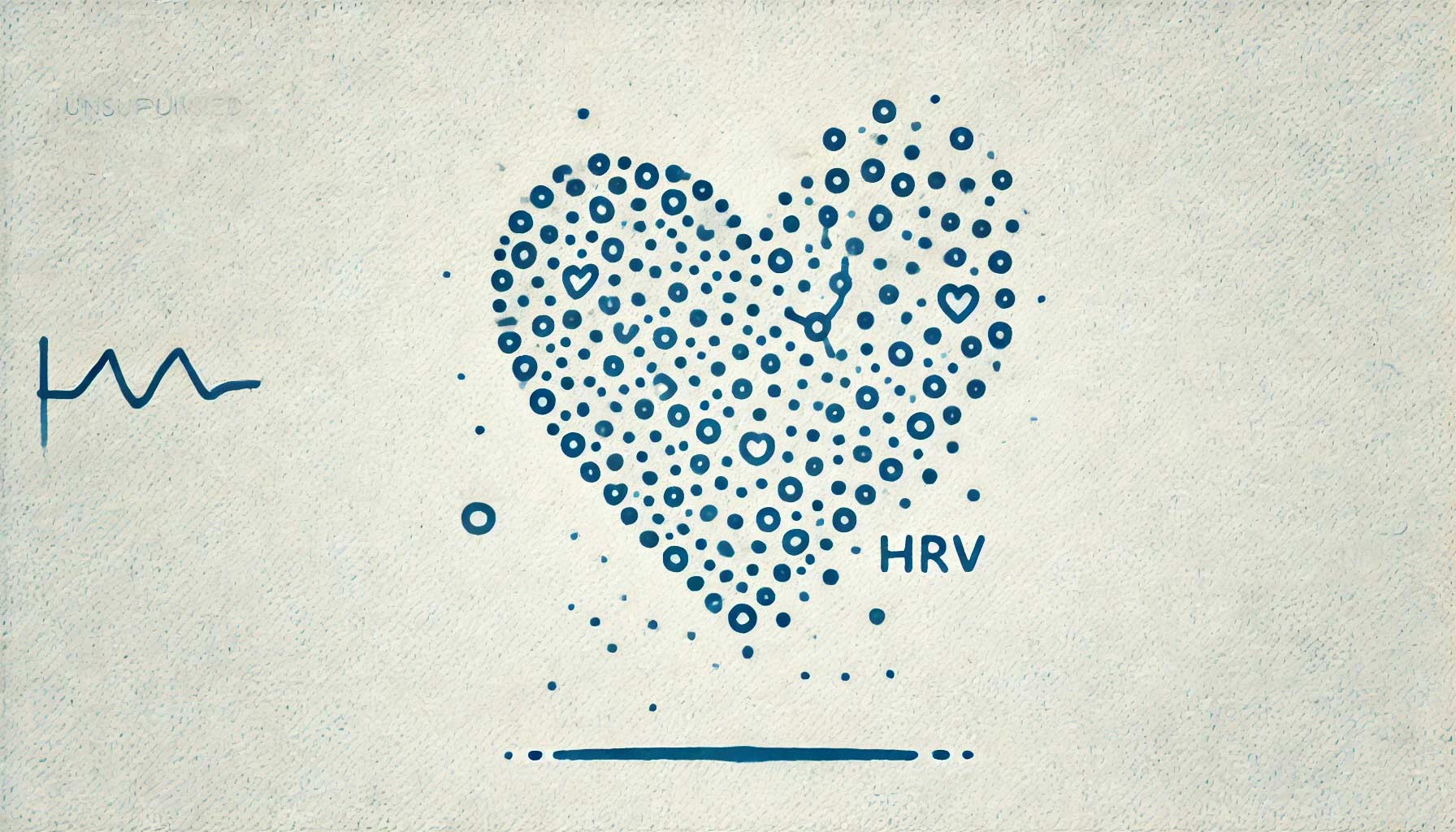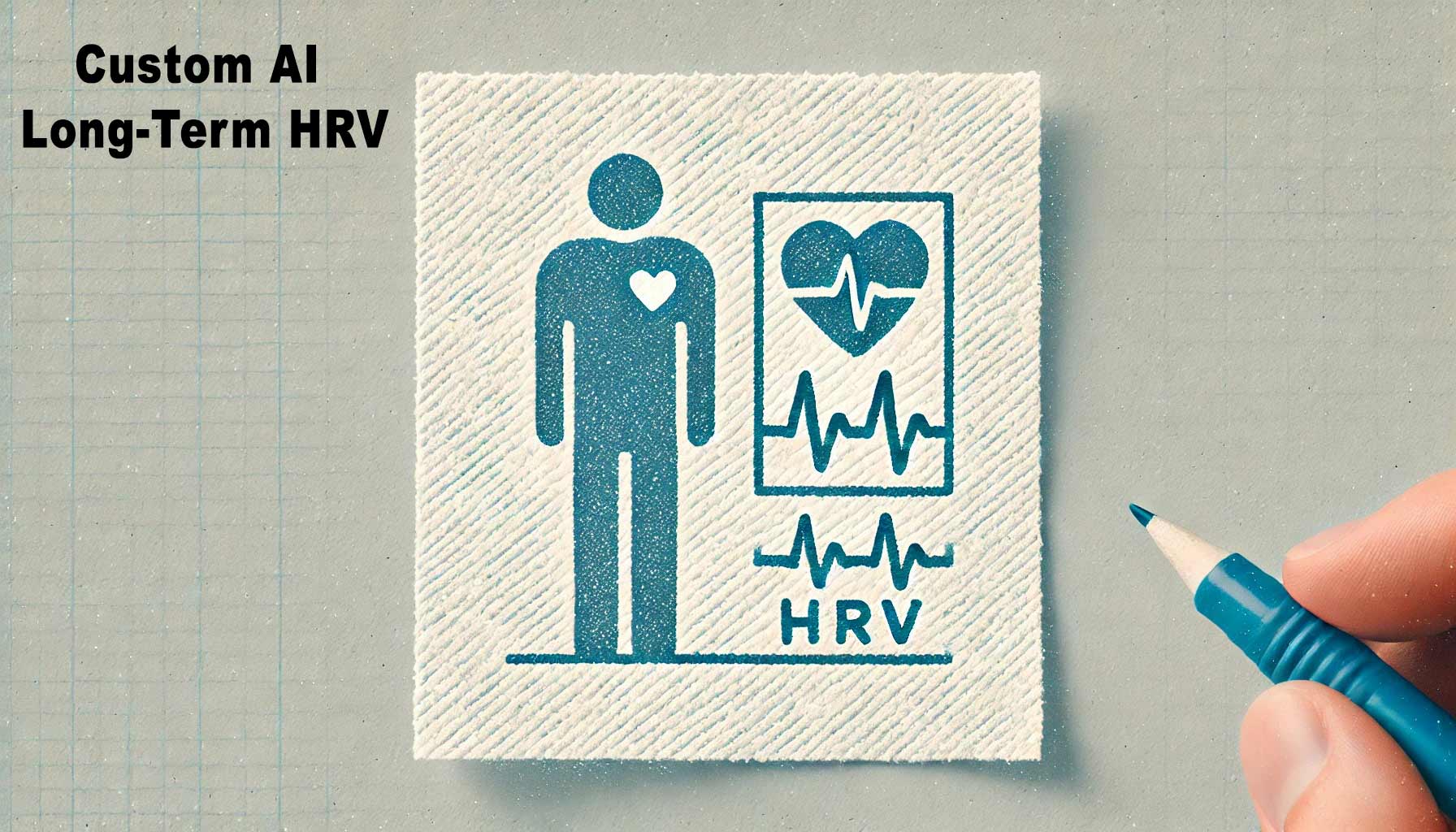I. Introduction
The Benefits of Custom AI Models for HRV Research
Developing custom AI models for long-term Heart Rate Variability (HRV) data offers significant advantages in research and clinical applications. Custom models can be tailored to address specific research questions, improve predictive accuracy, and integrate multimodal data sources, such as physical activity and environmental factors. By designing AI models that fit the unique characteristics of HRV data, researchers can unlock deeper insights into autonomic function and personalized health monitoring.
Key Steps in Building a Custom AI Model for HRV Data
The process of creating a custom AI model involves several critical steps: defining clear objectives, preparing high-quality data, selecting the appropriate model, training, and deploying the model in practical settings. This guide will walk you through each of these steps, providing practical advice and considerations for developing custom AI models that can enhance the analysis of long-term HRV data.

II. Defining Objectives and Identifying Research Questions
The foundation of any successful AI model lies in clearly defined objectives and research questions. Understanding the specific goals of your HRV analysis will guide the entire modeling process, from data preparation to model deployment.
A. Setting Clear Research Goals
Before diving into model development, it’s essential to establish what you aim to achieve with your AI model. Some common objectives in HRV research include:
- Predicting Stress Levels: Developing models to forecast periods of high stress based on HRV patterns and contextual data, such as activity levels or time of day.
- Identifying Cardiovascular Risks: Using HRV data to detect early signs of cardiovascular issues, such as arrhythmias or heart disease.
- Personalizing Health Interventions: Tailoring recommendations for lifestyle changes, exercise, or medication based on individual HRV responses.
Key Considerations:
- Specificity: Define objectives that are specific and measurable. For example, instead of a broad goal like “improving health,” aim for “predicting daily stress levels with 90% accuracy.”
- Relevance: Ensure that the objectives align with the broader goals of your research or clinical practice, such as improving patient outcomes or advancing scientific understanding.
B. Understanding the Data Requirements
Achieving your research goals depends heavily on the quality and characteristics of the HRV data you have available. It’s important to assess your data requirements early in the process:
- Types of HRV Data Needed: Determine which HRV metrics (e.g., time-domain, frequency-domain, non-linear measures) are most relevant to your objectives.
- Volume of Data: Consider the amount of data required to train robust AI models. Long-term HRV studies typically generate large datasets, which are beneficial for training complex models like deep learning networks.
- Contextual Data Integration: Identify any additional data sources that could enhance your model, such as:
- Physical Activity Data: Information from accelerometers or fitness trackers that can provide context for HRV changes.
- Sleep Data: Insights into how different sleep stages or sleep quality affect HRV.
- Environmental Data: External factors such as temperature, noise levels, or air quality that may influence HRV.
Key Considerations:
- Data Quality: High-quality, clean data is critical for accurate model training. Address issues like noise, missing data, and inconsistencies early in the data preparation phase.
- Data Privacy: Ensure compliance with data privacy regulations, particularly when working with sensitive health information.
By setting clear objectives and understanding your data needs, you create a solid foundation for developing a custom AI model tailored to your specific HRV research goals. The next steps involve preparing the data, selecting the right AI model, and refining it to maximize its performance in analyzing long-term HRV data.

III. Data Preparation for AI Model Development
Proper data preparation is crucial for developing accurate and reliable AI models for HRV analysis. This phase involves cleaning and preprocessing the data, extracting relevant features, and ensuring that the dataset is suitable for the chosen modeling approach.
A. Data Cleaning and Preprocessing
To build an effective AI model, the HRV data must be clean and standardized. The preprocessing steps include:
- Noise Reduction: Use AI-driven noise reduction techniques, such as autoencoders or signal processing algorithms, to filter out artifacts and ensure that the HRV data accurately reflects physiological signals.
- Handling Missing Data: Employ advanced imputation methods like machine learning regression, KNN imputation, or LSTM-based approaches to fill in missing data points, preserving the integrity and continuity of the dataset.
- Normalization and Scaling: Standardize HRV data by normalizing or scaling values to a consistent range, which helps improve the performance and convergence of AI models. This is especially important when working with deep learning models that are sensitive to data ranges.
Best Practices:
- Consistent Sampling Rates: Ensure that all HRV data is sampled at the same rate to avoid inconsistencies that could affect the model’s learning process.
- Removing Outliers: Detect and remove outliers that could skew the results. Techniques such as Z-score analysis or interquartile range (IQR) can be useful in identifying anomalous data points.
B. Feature Engineering and Selection
Feature engineering is the process of extracting meaningful features from raw HRV data that can help the AI model learn effectively. For HRV analysis, relevant features may include:
- Time-Domain Features: Metrics like the mean RR interval, SDNN, and RMSSD, which provide basic information about heart rate variability over time.
- Frequency-Domain Features: Power spectral density measures, such as LF and HF components, which indicate autonomic nervous system activity.
- Non-Linear Features: Measures like Poincaré plots, sample entropy, and Detrended Fluctuation Analysis (DFA), which capture the complexity and non-linearity of HRV data.
Feature Selection:
- Use algorithms like Recursive Feature Elimination (RFE) or Principal Component Analysis (PCA) to identify the most important features for your model, reducing dimensionality and improving performance.
Best Practices:
- Automated Feature Extraction: Consider using AI tools like CNNs or feature extraction pipelines that can automatically identify and extract relevant patterns from HRV data, saving time and reducing manual input.

IV. Choosing the Right AI Model for HRV Analysis
Selecting the appropriate AI model is a critical step in developing custom solutions for HRV analysis. The choice of model depends on your specific objectives, the nature of the data, and the computational resources available.
A. Model Selection Based on Objectives
Different AI models offer unique advantages depending on the research goals:
- Decision Trees and Random Forests: Ideal for classification tasks where interpretability is important. Random Forests are particularly robust against overfitting and can handle complex interactions between HRV features.
- Support Vector Machines (SVMs): Effective for both classification and regression, especially when dealing with high-dimensional data. SVMs are well-suited for identifying boundaries between different physiological states based on HRV data.
- Neural Networks and Deep Learning Models: For complex, non-linear relationships in HRV data, deep learning models like CNNs and LSTMs excel. CNNs are useful for pattern recognition, while LSTMs are ideal for sequential data and time-series predictions.
Guidelines for Selection:
- Align Model Complexity with Data Volume: Use simpler models for smaller datasets to avoid overfitting. For large datasets, deep learning models can leverage the richness of the data to learn more complex patterns.
- Consider Computational Resources: Deep learning models require significant computational power and expertise. If resources are limited, opt for more traditional machine learning approaches that are less resource-intensive.
B. Customizing Models for HRV Data
Customizing AI models allows researchers to tailor the algorithms specifically to their HRV data and research objectives:
- Modifying Neural Network Architectures: Adjust the number of layers, neurons, and activation functions in neural networks to optimize them for HRV analysis. For example, adding more LSTM layers can help capture longer-term dependencies in HRV data.
- Hyperparameter Tuning: Use techniques like grid search, random search, or Bayesian optimization to fine-tune hyperparameters (e.g., learning rate, batch size, number of epochs) for optimal model performance.
- Ensemble Methods: Combine multiple models (e.g., an ensemble of Random Forests and LSTMs) to improve robustness and accuracy, leveraging the strengths of different algorithms.
Best Practices:
- Validation and Testing: Rigorously validate your model using cross-validation and independent test datasets to ensure that it generalizes well to unseen data.
- Regular Updates and Retraining: As new HRV data becomes available, retrain your models periodically to incorporate the latest information and maintain high accuracy.
By carefully selecting and customizing AI models, researchers can develop powerful tools for analyzing long-term HRV data, enabling more accurate predictions and deeper insights into autonomic function and health. The next steps will involve training, evaluating, and deploying these models in practical settings to achieve their full potential.

V. Training and Evaluating Custom AI Models
Training and evaluating your AI models are crucial steps that determine how well the model will perform on new, unseen HRV data. This phase involves splitting the data into training, validation, and test sets, optimizing the model’s parameters, and assessing its performance using appropriate metrics.
A. Training the Model
Training involves teaching the model to recognize patterns in HRV data by adjusting its parameters through iterative learning processes.
- Training and Validation Sets: Divide your dataset into training and validation sets, typically using an 80/20 split. The training set is used to learn the model parameters, while the validation set helps tune hyperparameters and prevent overfitting.
- Loss Functions: Choose a loss function that aligns with your model’s objective:
- For Classification: Use categorical cross-entropy or hinge loss.
- For Regression: Use mean squared error (MSE) or mean absolute error (MAE).
- Optimization Techniques: Employ optimizers like Adam, SGD (Stochastic Gradient Descent), or RMSprop to minimize the loss function and adjust the model’s weights.
- Cross-Validation: Implement cross-validation techniques, such as k-fold cross-validation, to ensure the model’s robustness and reduce bias. This approach provides a more comprehensive evaluation of the model by testing it on different subsets of the data.
Best Practices:
- Early Stopping: Use early stopping to prevent overfitting by monitoring the validation loss and stopping training when the loss stops improving.
- Regularization Techniques: Apply regularization methods like dropout, L1/L2 regularization, or batch normalization to enhance model generalizability.
B. Evaluating Model Performance
Evaluating your AI model’s performance helps determine its accuracy and reliability in predicting HRV-related outcomes. Key evaluation metrics include:
- Accuracy: Measures the overall correctness of the model’s predictions. Suitable for classification tasks but less informative for imbalanced datasets.
- Precision, Recall, and F1-Score:
- Precision: Indicates how many of the positive predictions were correct.
- Recall: Measures how many actual positives were correctly identified by the model.
- F1-Score: Balances precision and recall, providing a single metric that accounts for both false positives and false negatives.
- ROC-AUC (Receiver Operating Characteristic – Area Under Curve): Assesses the model’s ability to distinguish between classes, with higher values indicating better performance.
- R² Score and Mean Absolute Error (MAE): For regression tasks, R² measures how well the predictions fit the actual data, while MAE provides the average magnitude of errors in the predictions.
Best Practices:
- Use Independent Test Sets: Always evaluate the final model on a separate test set that was not used during training or validation to ensure unbiased performance assessment.
- Error Analysis: Conduct an error analysis to understand where the model makes mistakes and refine the model or data accordingly.
By following these training and evaluation strategies, you can develop robust AI models that deliver accurate and reliable predictions from HRV data, supporting deeper insights into autonomic function and health outcomes.

VI. Practical Tips for Model Deployment
Once your AI model is trained and validated, the next step is deploying it into a practical setting, such as a research environment or clinical application. Successful deployment requires careful planning to ensure the model integrates smoothly with existing workflows and continues to perform well over time.
A. Integrating Models into Research or Clinical Workflows
Deploying AI models effectively involves making them accessible and usable within the context of the intended application:
- Integration with Health Monitoring Systems: For clinical use, integrate the AI model with electronic health record (EHR) systems or wearable health devices to provide real-time analysis and feedback.
- User-Friendly Interfaces: Develop intuitive dashboards or apps that allow researchers or clinicians to interact with the model’s outputs easily. This includes clear visualizations of HRV trends, risk predictions, or personalized recommendations.
- API Development: Consider creating APIs (Application Programming Interfaces) that allow your AI model to communicate with other software applications, facilitating seamless data exchange and processing.
Best Practices:
- Pilot Testing: Conduct pilot studies to test the model’s integration in a real-world setting, gathering feedback and making adjustments before full-scale deployment.
- Continuous Feedback Loop: Implement systems that collect user feedback and real-world data to refine and improve the model over time.
B. Monitoring and Updating Models
AI models should be monitored continuously to ensure they remain accurate and relevant as new data is collected.
- Performance Monitoring: Set up automated monitoring systems to track the model’s performance metrics over time, identifying any declines in accuracy or changes in data patterns that may require adjustments.
- Retraining and Updating: Regularly retrain the model with the latest data to keep it up-to-date with evolving trends and patterns in HRV. Use techniques like transfer learning to adapt existing models to new datasets without starting from scratch.
- Version Control: Maintain version control of your models, tracking changes and updates to ensure that each iteration is documented and can be rolled back if necessary.
Best Practices:
- Data Security and Compliance: Ensure that all updates and monitoring activities comply with data privacy and security standards, protecting sensitive health information.
- Scalability Considerations: Design models that can scale to handle increasing volumes of data as your research or clinical practice grows.
By following these deployment strategies, researchers and clinicians can effectively integrate custom AI models into their workflows, enhancing the utility of HRV data in real-world applications. The ongoing monitoring and updating of these models ensure they continue to provide valuable insights, driving better health outcomes and advancing HRV research.

VII. Conclusion
Realizing the Potential of Custom AI Models in HRV Research
Developing custom AI models for long-term HRV data offers a powerful approach to unlocking detailed insights into autonomic function, stress, cardiovascular health, and more. By defining clear objectives, preparing high-quality data, selecting the right models, and carefully deploying them, researchers can harness the full potential of AI to enhance HRV analysis.
Embracing AI for Future Health Interventions
Custom AI models tailored to specific research needs provide not only improved accuracy but also the flexibility to adapt as new data and challenges arise. With continued advancements in AI and machine learning, the possibilities for HRV research are expanding, paving the way for more personalized, precise, and impactful health interventions. Researchers are encouraged to embrace these tools and explore innovative applications of AI in their HRV studies, pushing the boundaries of what is possible in health monitoring and research.
Call to Action
📅 If you want to learn more about Fibion’s solution for measuring HRV, do not hesitate to book a video call with our expert Dr. Miriam Cabrita.

🔍 You may also discover our product portfolio on our website: Fibion SENS, Fibion Research, Fibion Vitals, Fibion Sleep, Fibion Emfit and Fibion Circadian, each with its unique set of features and applicability.
✨ For those interested in an in-depth look at the features and pricing across available heart rate variability (HRV) actigraphy tools, we invite you to explore our comprehensive comparison sheet. Click here for access.
Frequently asked questions about this topic:
What are the first steps in developing a custom AI model for HRV data? +
The initial steps involve defining clear objectives and identifying specific research questions. Setting measurable goals and understanding data requirements are crucial to guide the model development process.
Why is data preparation important for AI models in HRV analysis? +
Proper data preparation, including cleaning, preprocessing, and feature extraction, is essential for developing accurate and reliable AI models. This ensures the data reflects true physiological signals and enhances model performance.
What AI models are best suited for HRV data analysis? +
The choice of AI models depends on the specific objectives. Decision trees and random forests are good for classification tasks, while deep learning models like CNNs and LSTMs are ideal for handling complex, non-linear HRV data.
How can custom AI models improve HRV analysis? +
Custom AI models can be tailored to specific research needs, enhancing predictive accuracy, integrating multimodal data, and providing deeper insights into autonomic function and personalized health monitoring.
What are key considerations for deploying AI models in practical settings? +
Effective deployment involves integrating models into clinical or research workflows, ensuring data security, and setting up monitoring systems to track performance. Pilot testing and continuous updates are also crucial for success.
How do you ensure the accuracy of AI models for HRV data? +
Accuracy is ensured through rigorous training, validation, and evaluation using appropriate metrics such as accuracy, precision, recall, and ROC-AUC. Regular retraining with new data helps maintain model performance.















